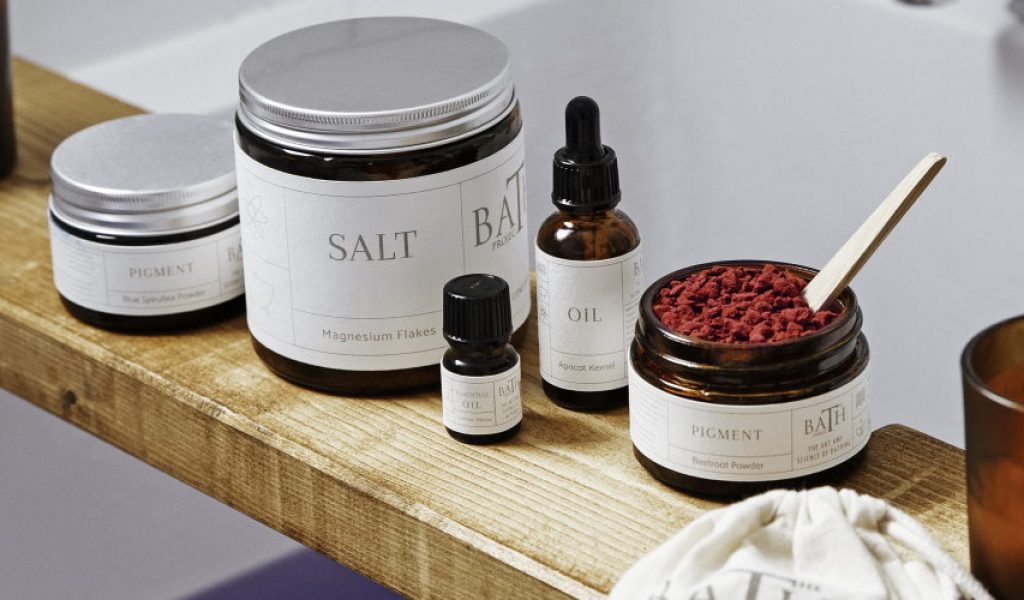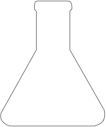




What is Bathology?
So many disciplines are suffixed by ‘- ology.’ It’s a Greek root, referring to ‘the study of’. Psychology, dermatology, oceanology, biology … all of these are linked with gaining a deeper understanding in a specific realm, in order to promote and protect it, and in order to help humans benefit from that knowledge.
Bathology is no different. It is the scientific exploration of the power of the bath; the power of its associated rituals, and the power of the ingredients that can be added to the bath’s water to heighten the experience and to maximise its effects.
At The Bath Project, we want to encourage our community not merely to ‘have a bath’ because it is pleasant, or relaxing, but to explore bathology and its potential. We want to guide you in making your bathing experience as nurturing, healing and rebalancing as possible. Our aim is to combine our scientific knowledge with the daily act of cleansing, and the ritualistic act of rebalancing.
IT’S ALL BIOLOGY TO ME





Aromatherapy
Even if you’ve never used bathing as self-care in the past, you’re likely to have heard of aromatherapy, which uses oils extracted from plants to boost physical and mental wellbeing. It’s a therapeutic practise which has been in use for millennia – there are examples of aromatherapy dating back as far 3000 BC in the present-day location of Pakistan, while records from 2000 BC in India list 700 substances, including ginger, cinnamon, myrrh, and sandalwood, being used for both spiritual and healing purposes.
The preparation of essential oils is a lengthy process, involving separation, extraction, fusion and sublimation. There’s a magic to these words: it’s not difficult to understand why and how biology and alchemy cross paths, and the ways in which something as tangible as the physical self is intertwined with the spirit.
Not all plant extractions are created equally, however: look out for products which have been harvested in the areas in which they occur naturally, and which have been extracted under low temperature and low pressure.
If you needed to be convinced of the fact that many living things, despite their differences, have much in common, then consider this: the part of the plant that the oil is sourced from has a direct link with the part of the body that it best benefits. Those extracted from the plant itself tend to have the greatest impact on the body – for example, on issues such as digestion and circulation – while those from the flower are associated with emotional wellbeing. Finally, those from the fruit have an impact on brain function, aiding concentration and focus.

Bach Flower Remedies
Although a highly regarded medical doctor at the Royal Homoeopathic Hospital in London, Dr Bach (1886-1936) was highly attuned to his sensory and intuitive self. Through observation and experimentation, he devised a system consisting of 38 flower extracts which, he believed, helped to promote a natural state of calm and wellbeing.
Bach remedies are used by dissolving them in water, making them a perfect addition to the bath.
To determine which Bach remedy might best benefit you, you can take an online test, or find out more in The Bath Project book

Herbal Remedies
Although many of us associate herbal remedies with having to ingest bitter, aromatic concoctions, they can just as readily be used in the bath to alleviate disorders ranging from skin issues to circulation problems. Nor are herbal remedies the stuff of ‘woo woo’ thinking: according to the World Health Organisation (WHO), around 30 to 40% of all medications are, in fact, herbal preparations, and wisdom about the efficacy of herbal preparations dates as far back as 4000 BC, with Indian Ayurvedic medicine extolling the virtues of turmeric.
Herbs can be prepared in a variety of ways, ranging from tinctures and syrups to infusions and elixirs. When used in the bath, their greatest impact will be upon the skin, although psychological effects will be experienced through sensory and olfactory pleasure.

Organic Acids
Many people shy away from acids, mistakenly thinking that they have harsh, stripping properties. Yes, acids can be powerful but, when used correctly, they are entirely safe, especially if we focus on those found naturally in things that we eat and drink, such as citric acid (found in oranges), malic acid (found in apples) and lactic acid (found in milk).
The skin’s ideal pH is between 4.5 and 5.5 – but that of water is higher, at 7. By using acids, we can lower the pH of water and help the skin to reach its optimum balance, as well as brightening and hydrating.




WHAT THE PHYSICS?!!

Think about physics and perhaps you’ll have mental images of crazy Einstein hair, or apples falling from trees – but, as the study of how things move, shift, develop and change, there is a beauty and poetry to physics that goes far beyond anything you may have learned in the school science lab.
When it comes to bathing, the act of immersing yourself can be as much of a visual experience as it can a tactile one, thanks to the ways in which different preparations can colour the water. Different hues are associated with different moods, and colour can be used as therapy – a practice that harks back to ancient civilisations in Greece, China and Egypt.
FEEL THE CHEMISTRY





Given that chemistry is the branch of science that examines different elements and how these change in various circumstances, we can see how it is key to the alchemy of bathing, which draws together different substances to create a restorative effect.
Historically, salt has been held in high esteem in relation to healing and bathing. The Peng-Tzao-Kan-Mu, a Chinese pharmacology book written in 2700 BC, lists 40 different types of salt, as well as how they might best be used. Ancient Greek and Roman doctors also held strong beliefs about the healing properties of salts, especially for skin conditions and aches. And, of course, mineral baths and spas became popular and even fashionable in Europe in the 18th century, sparking renewed interest in balneology: the study of bathing.
Anyone who has ever swum in the sea will be able to testify to how revitalising salt water is – but why? Thanks to the presence of minerals such as magnesium, potassium, calcium, sodium and bromide, salt water has the ability to detoxify and purify, as well as to relax the muscles and restore balance in the body’s many systems and organs. That said, different salts have different qualities – for example, Dead Sea Salt contains higher than average levels of zinc, calcium, iodine and potassium – all of which can be used to ameliorate skin conditions – while Epsom Salt is rich in magnesium sulphate, making it useful for the treatment of aches, pains and spasms. Himalayan salt, as well as looking pretty with its pinkish hue, is packed with 84 different minerals, including potassium, magnesium and iron; as such, it is celebrated for its ability to alleviate various skin conditions, including psoriasis and acne, and to reduce discomfort from muscle and joint pain, and insect bites.
Clay is a substance that’s been celebrated for its health and beauty benefits for centuries. Although different types of clays have their own, unique properties, they’re generally celebrated for the fact that they possess a high mineral content, and can be used as a mask on the hair and skin to draw out impurities. Some examples of popular clays – and their properties – are Black ‘Aussie’ Clay, which is high in iron; and Fuller’s Earth Clay, which can be used to tighten the skin and absorb excess oils. Kaolin clay does not extract impurities, but is useful for sensitive skin and can stimulate circulation, while Rhassoul clay is highly absorbent, and therefore useful for oily hair and complexions, as well as being high in calcium, sodium and magnesium.
Oils are also chemicals playing an important role in skin and hair care, because they are full of antioxidants and vitamins – particularly vitamins A, D, E and K. Oils are well known to help with moisturising the skin but, contrary to common belief, they are actually beneficial to facial care as well, depending on the type of oil used. For instance, Hazelnut oil is good for oily skins, while sesame oil is better suited for dry skins.












